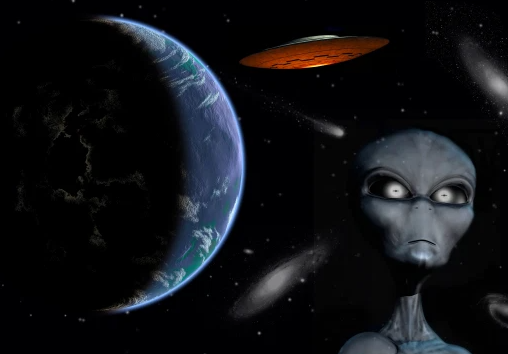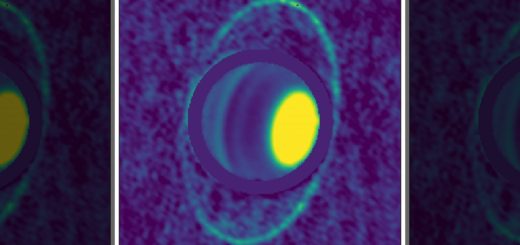IN A GALAXY FAR, FAR AWAY Scientists pick up deep space signals which could PROVE aliens are trying to contact humanity

Unusual transmissions may have been sent by civilisation living in a star system outside the Milky Way.
SCIENTISTS may have found proof that E.T. really is phoning home — in the form of powerful radio signals which have been detected repeatedly in the same exact location in space.
Astronomy experts with the Green Bank Telescope in West Virginia and the Arecibo Observatory in Puerto Rico have discovered six new Fast Radio Bursts (FRBs) emitting from a region far beyond our Milky Way galaxy, according to a recent report in the Astrophysical Journal.
The discovery — made in the direction of the Auriga constellation — has prompted wild speculation that aliens could be trying to get in touch.
It is significant considering the fact that at least 17 FRBs have now been detected in this area and is the only known instance in which these signals have been found twice in the same location in space.
The region where the signals are coming from, dubbed FRB 121102 by scientists, is located about 3 billion light years away from earth.
Five of the recently found FRBs were detected with the Green Bank Telescope, while the other was recorded by the Arecibo Observatory, “for a total of 17 bursts from this source,” the report says.
The signals were also found earlier this year and in 2012.
According to experts, the FRBs could be the result of two things: solar flares from a neutron star or extra-terrestrials. But it’s still too early to tell.
3
Credit: Getty Images
“Whether FRB 121102 is a unique object in the currently known sample of FRBs, or all FRBs are capable of repeating, its characterisation is extremely important to understanding fast extragalactic radio transients,” the scientists write in their report.
In 2015, physicist John Learned — with the University of Hawaii at Manoa — and Michael Hippke, with the Institute for Data Analysis, published a research paper arguing that repeating FRB waves had a 1 in 2,000 chance of being coincidental.
They claimed the radio bursts either came from a man-made spy satellite or a super-dense star, which would regularly emit bursts of radio waves.
Using data from the Sloan Digital Sky Survey, the pair analysed the spectra of 2.5 million different stars and discovered at least 234 that were producing the signals.
“We find that the detected signals have exactly the shape of an ETI [extraterrestrial intelligence] signal,” wrote Borra and Trottier. “Although unlikely…there is also a possibility that the signals are due to highly peculiar chemical compositions in a small fraction of galactic halo stars.”
Earlier in 20156, genius scientist Stephen Hawking said humanity must seek out intelligent life before it finds us – or we could be wiped out.
Hawking, 74, says a technologically advanced alien race could send our vulnerable race the way of the dodo if we’re not careful.



 Creators of mankind
Creators of mankind Description of “Tall white aliens”
Description of “Tall white aliens” Where they came from?
Where they came from? About hostile civilizations
About hostile civilizations The war for the Earth
The war for the Earth “Tall white aliens” about eternal life
“Tall white aliens” about eternal life Video: “Nordic aliens”
Video: “Nordic aliens” Aliens
Aliens Alien encounters
Alien encounters The aliens base
The aliens base UFO
UFO Technology UFO
Technology UFO Underground civilization
Underground civilization Ancient alien artifacts
Ancient alien artifacts Military and UFO
Military and UFO Mysteries and hypotheses
Mysteries and hypotheses Scientific facts
Scientific facts


















